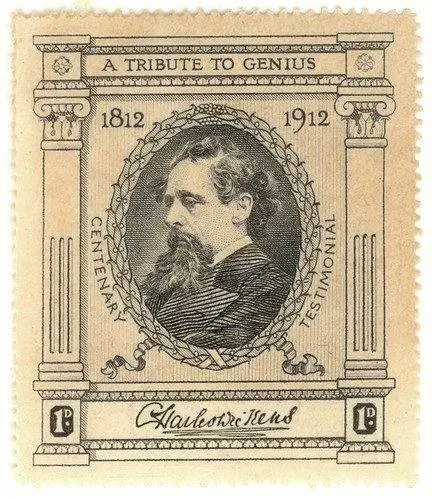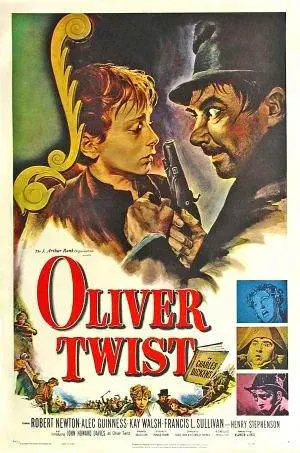Charles Dickens’ classic novel Oliver Twist was first published serially from 1837 to 1839 before being released in a single volume in 1838. It tells the dramatic tale of an orphan boy in 1830s London who joins a criminal gang and encounters danger and mystery. Yet Oliver retains his morality despite the grim threats surrounding him. With its unforgettable characters, social themes and criticism, Oliver Twist became one of Dickens’ most iconic works.
Table of Contents
Plot Summary
The novel follows the young orphan Oliver Twist, who begins life in a workhouse before being sent to live in an undertaker’s gloomy apprenticeship. After an altercation with another boy, Oliver escapes to London. There he meets the Artful Dodger, a crook who introduces Oliver to Fagin and his gang of child pickpockets.
Naively trusting, Oliver is taught to steal though he remains unaware of the gang’s many crimes. When he is caught attempting to pick a man’s pocket, the compassionate victim Mr. Brownlow takes Oliver in. But Fagin and the violent thief Bill Sikes kidnap Oliver back to continue their criminal plots.
Oliver is shot while assisting the gang with a burglary. Sickly, he is taken in by the wealthy Maylie family to recover. They grow fond of Oliver and treat him as their own, shielding him from Fagin’s schemes. After many more adventures, Oliver is eventually revealed to be Mrs. Maylie’s nephew. The villains are captured and Oliver finds happiness and security at last.
Themes and Analysis
Major themes in Oliver Twist include:
- Poverty and social injustice
- Corruption of innocence
- Crime and class divisions in 19th century London
- Morality and compassion persevering against hardship
- Greed and violence of criminal figures
- Abuse of children and the vulnerable
- Idealism versus cynicism
Dickens condemned cruel Victorian institutions like the workhouses and child labor. He criticized upper class indifference toward the poor. But Oliver’s unwavering morality offers hope.
Background and Charles Dickens
Charles Dickens was born in England in 1812 and endured a difficult childhood, working at a factory at age 12 when his father was jailed for debt. His experiences informed his novels’ social commentary.

Relevant context for Oliver Twist includes:
- England’s Poor Laws and workhouses for the destitute
- Overcrowding, poverty and violence in 19th century London
- Exploitation of child workers
- Contrasts between lavish and desperate lives in the city
- Public executions and popularity of sensational crime stories
- Dickens’ own traumatic childhood of hardship
With Oliver Twist, Dickens cemented his reputation as England’s preeminent novelist with an eye for social reform.
Analysis of Characters
Oliver Twist – The orphan protagonist whose experiences reveal the grim underbelly of London’s poor. His morality withstands the darkness.
Fagin – The cunning old leader of the pickpocket gang who manipulates children into a life of crime but meets a tragic end.
Bill Sikes – Fagin’s violent accomplice who abuses and uses Oliver in burglaries. His murder of Nancy leads to his downfall.
Nancy – A young member of Fagin’s gang who feels sympathy for Oliver and ultimately sacrifices herself for him.
Mr. Brownlow – The kindly gentleman who takes Oliver in, the first to show him true compassion.
The Artful Dodger – Fagin’s crafty young pickpocket who first brings Oliver into the gang’s world of crime.
Influence and Significance
As an early social novel, Oliver Twist proved highly influential:
- Criticized indifference towards child poverty and labor exploitation
- Contrasted wealth and poverty, raising awareness of inequality
- Dark depictions of 19th century London slums and crime
- Championed compassion through characters like Nancy and Mr. Brownlow
- Fagin became an archetypal cunning crime boss figure
- Boosted popularity of melodramatic “Newgate novels” about criminal lives
- Inspired numerous film, TV and stage adaptations
- Scenes like Oliver asking for more food remain iconic
Why Read Oliver Twist
Reasons for Oliver Twist’s enduring status as a classic:
- Gritty descriptions of grim poverty in 19th century London
- Oliver’s unwavering morality and resilience as an orphan
- Array of memorable villains like Fagin and Bill Sikes
- Plea for social justice for the impoverished children and families
- Contrast of grim workhouses and criminal underground with London’s luxury
- Symbolic clashes between innocence and corruption
- Perseverance of goodness in figures like Oliver, Brownlow and Nancy
- Memorable melodramatic plots and dramatic suspense
- Scathing criticisms of social indifference to inequality
Conclusion
Charles Dickens’ Oliver Twist remains a classic for its unflinching social commentary and story of an orphan’s adventures. Oliver’s journey illuminates the harsh realities of poverty, child labor and crime in 19th century London. Yet despite the grim threats surrounding him, Oliver perseveres as a beacon of morality. This iconic novel continues to resonate readers today with its bold vision for justice and reform.



1 Comment
Pingback: The Evolution of the English Novel: From Defoe to Dickens - LitGram by MukeshRishit